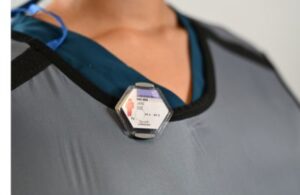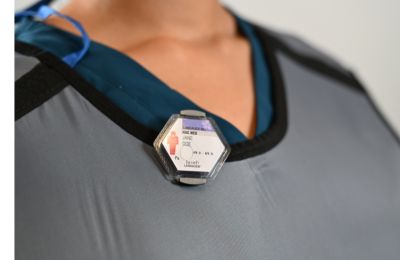
By Molly Pereira, CDA Executive Director
From the 2024 Winter Journal of the Colorado Dental Association
A few changes to Colorado’s rules regulating x-rays have occurred or are in process at the time of this article (December 2023). Complete information can always be found on the state’s website at https://www.colorado.gov/pacific/cdphe/xray. Below, please find a summary of recent activity.
Dosimetry Badge Related Waivers
As of Dec. 15, dental offices no longer need to request a waiver from ongoing occupational radiation exposure monitoring requirements, however, monitoring is still required and in-office recordkeeping must be implemented for future inspections.
In October 2023, the Colorado Department of Public Health and Environment (CDPHE) Radiation Program made changes to Part 4 of the Colorado radiation control regulations, titled “Radiation Control – Standards for protection against radiation.” This rule contains basic radiation protection requirements, such as dose limits and occupational monitoring requirements, and applies to all x-ray registrants and radioactive materials licensees in Colorado. The primary change to Part 4 will eliminate the current language in section 4.18.3 and replace it with a recordkeeping requirement specific to x-ray registrants.
“Registrants shall maintain records of the evaluation of likely external dose and the determination to monitor or not monitor individuals to demonstrate compliance with the occupational dose limits of Part 4. The registrant shall retain the record required by 4.18.3 for inspection until the Department terminates the registration requiring the record.”
All dental offices (on a per facility basis) must supply and require the use of individual monitoring badges for anyone likely to exceed the radiation monitoring thresholds. In most cases, dental x-ray facilities may stop using radiation badges by demonstrating through a written evaluation that employees will not exceed the applicable monitoring thresholds.
There are two methods dental facilities can use to determine if they will exceed monitoring thresholds. The first method is to use radiation badges for at least six months. At the end of the six-month period, the badge reports must be reviewed to determine if the facility would be likely to exceed the dose limits on an annual basis. The second method is to have a Qualified Expert (QE) evaluate the facility for the likelihood to exceed occupational dose limits by performing a radiation assessment. In both cases, after the evaluation is performed the facility must make a determination if monitoring is required. The written determination to continue monitoring or discontinue monitoring must be kept on file at the facility, along with any other supporting documents and reports.
Each year the dental facility must review its Radiation Protection Program to ensure no changes occurred that would increase the radiation exposure levels to workers. If the radiation exposure conditions change, at any time, the need to provide radiation badges shall be re-evaluated, and a new determination on monitoring must be performed.
The changes mentioned above went into effect Dec. 15, 2023.
A complete list of state resources on x-ray and dosimetry is available at https://www.colorado.gov/pacific/cdphe/xray.
Rectangular Collimator Requirements
In November 2019, the Colorado Board of Health adopted changes to state x-ray rules that required dental offices to implement rectangular collimation for stationary intraoral x-ray imaging units by Jan. 1, 2025. While rectangular collimation has been shown to reduce patient exposure when used correctly, some argue that there is a questionable patient benefit due to extra exposure in retakes associated with the narrower margin of error on these images.
As the deadline for compliance nears, the supply chain to obtain collimator devices has presented substantial challenges for dental offices. Most equipment suppliers have discontinued distribution of the devices or show the devices as “out of stock” on their websites.
Due to collimator device availability and implementation concerns to meet FDA requirements when using such devices, implementation is not feasible at this time. For this reason, the Colorado Board of Health is in the process of rescinding this provision (6 CCR 1007-1 Part 6, 6.7.1.5(3)(b)) for rectangular collimator implementation. The CDA will have more information on this topic following the February 2024 rulemaking hearing. If adopted by the board in February, the proposed changes will become effective April 15, 2024, pending review and acceptance from appropriate Colorado state agencies.
Patient Shielding
There have been several clinical articles in 2023 addressing the effectiveness or necessity for patient lead shielding during dental imaging. Shielding has been in practice for many decades, but these reports and articles have caused a huge shift in thought.
Ultimately, based on science, dental offices can decide what is appropriate for their practices and patient comfort and concerns. As research continues to emerge, we wanted to provide information on what is required in Colorado from CDPHE radiation control regulations on this topic.
6 CCR 1007-1 Part 6 does not specify full body shielding (aprons) for pediatric or adult patients in dental imaging, nor does it specify thyroid shielding for adults. The current regulatory references for shielding follow:
Part 6, 6.7.3.4
“Excluding cases in which shielding would interfere with the diagnostic procedure, thyroid shielding shall be required for pediatric patients when performing intraoral imaging.”
Part 6, 6.3.3.7
“Beam collimation, positioning, and shielding of radiosensitive organs from the useful beam that will not interfere with the imaging or medical procedure, or is contraindicated for radiation safety reasons, shall be used to reduce radiation exposure to the patient whenever possible.”
To learn more about his topic, dentists can also visit the American Association of Physicists in Medicine website, which provides many links to publications, references and studies regarding the use of shielding in imaging: https://w3.aapm.org/cares/.


